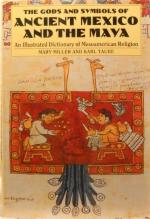|
This section contains 7,859 words (approx. 27 pages at 300 words per page) |

|
This entry is devoted to a summary of the religious patterns of the leading peoples of that portion of the Mesoamerican area cotradition located west of the Isthmus of Tehuantepec in the Postclassic period (c. 900–1521 CE). Western Mesoamerica was a complex mosaic of linguistic-ethnic groups organized into various polities, but certain ones stand out most prominently: the Aztec, Tarascan, Otomí, Huastec, Totonac, Mixtec, and Zapotec. Although those who spoke the same language normally shared most cultural characteristics, including religious-ritual patterns, rarely were they unified politically. The more advanced groups were organized into what can be called city-states. Occasionally an especially powerful one of these, usually confederated with others, embarked on an imperialistic course, extending its military and political control over a wide area. The earliest well-documented empire of this type, one that may have dominated much of central Mexico, was that of the Toltec, so named...
|
This section contains 7,859 words (approx. 27 pages at 300 words per page) |

|




